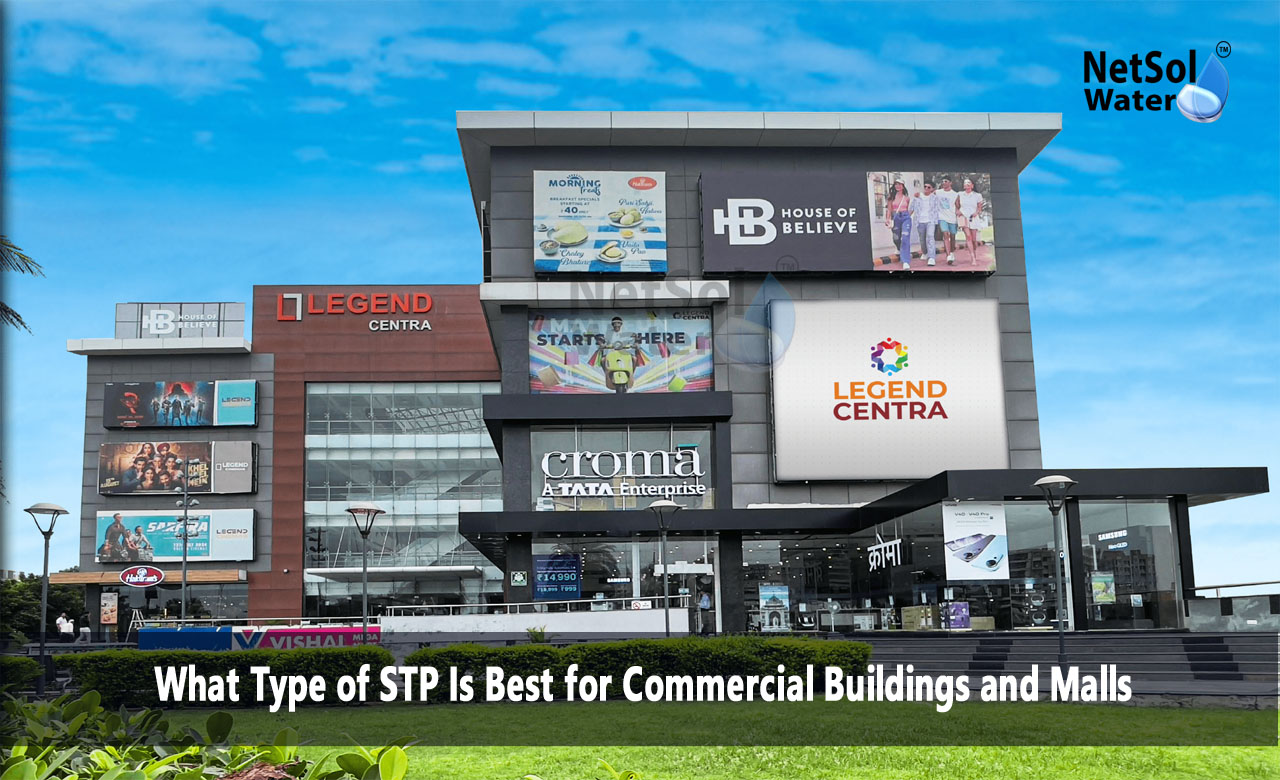What Type of STP Is Best for Commercial Buildings and Malls?
Handling wastewater in large properties demands clear planning and strong systems. A well-chosen treatment plant turns dirty water into a safe resource for cleaning or landscape upkeep. It also helps meet strict rules set by local authorities and reduces pressure on freshwater supplies. In a busy mall or office complex, wastewater volumes can swing from low to high in minutes. Facility teams need a system that adapts to these fluctuations without losing performance. They also need a solution that fits into tight spaces and works with existing layouts.
Membrane Bioreactor Systems (MBR)
Modern malls handle high visitor counts each day. They need strong treatment that fits in limited space. Membrane Bioreactor Systems meet those needs with a tight design. Let us have a look on some major features and benefits of this system.
Design Features
A membrane bioreactor uses fine filters to separate solids and germs from water. This design yields very clear effluent. It occupies a smaller area than a traditional plant. It fits under a parking deck or behind a service room. The system works under constant pressure for reliable flow.
Benefits for Large Flows
This STP handles shifts in water volume with ease. It adapts to peak visitor hours. It delivers stable quality even when flow spikes. It offers high removal of pollutants. It meets strict discharge norms without extra steps. This makes it ideal for malls with food courts and restrooms in every wing.
Maintenance Considerations
Operators must monitor filter fouling on a set schedule. They need to backwash membranes at regular intervals. This task requires a trained technician on site or from a service vendor. Yet the effort keeps output high and avoids unplanned downtime. Overall the system runs with little manual intervention once set up.
Read: Sewage Treatment Plant Manufacturer
Sequencing Batch Reactor Solutions (SBR)
A flexible plant can react to changing water loads. Sequencing Batch Reactor Solutions offer that flexibility in one tank. Let us have a look on some ways this model serves commercial sites.
Operational Cycle
The reactor runs in stages of fill react, settle and decant. Each stage clears water in one vessel. This means no complex piping between multiple tanks. The control logic switches stages automatically. It delivers treated water that meets reuse standards.
Space and Cost Balance
This STP fits a moderate footprint when you need fewer tanks. You can place it near a service yard or basement. It costs less than a membrane plant at the outset. You can upgrade controls over time as budgets allow. This makes it a good fit for mid scale malls or office blocks with retail spaces.
Ease of Control
The batch model hinges on control settings. You can set cycle times for different seasons or peak days. The automation avoids human error in switching steps. You can review logs to spot issues early. This helps maintain a high treatment rate all year long.
Moving Bed Biofilm Reactor Designs (MBBR)
Large complexes often seek systems that need minimal land. Moving Bed Biofilm Reactor Designs reduce the need for extra tanks. Let us have a look on some key aspects that suit big facilities.
Biofilm Carrier Technology
This STP uses small carriers that float and let bugs cling to their surfaces. The carriers provide a large area for microbes that break down waste. This happens in a single tank rich in oxygen. It cuts the need for separate aeration and settling units.
Adaptation to Heavy Load
The system adjusts to sudden jumps in wastewater strength. The film on carriers regrows fast after a shock load. This gives stable treatment even when a janitorial crew cleans many floors. The design handles grease and organic matter from food courts too.
Simplicity of Upkeep
You need to check carrier movement and tank water depth. You need occasional cleaning of screens. A periodic check of oxygen levels ensures healthy microbe activity. Overall you see less downtime and fewer parts to replace.
Conclusion
Effective water treatment supports a healthy facility image and cuts costs. You now know how membrane bioreactors sequencing batch reactors and moving bed biofilm reactors compare. Each brings clear water reuse options and fits space or budget limits in its own way. If you seek more guidance on selecting the right STP for your project reach out today. Our experts stand ready to answer questions or provide a full consultation. Choose the option that keeps your commercial building or mall running smoothly and sustainably.
Contact Netsol Water at:
Phone: +91-9650608473, Email: enquiry@netsolwater.com



